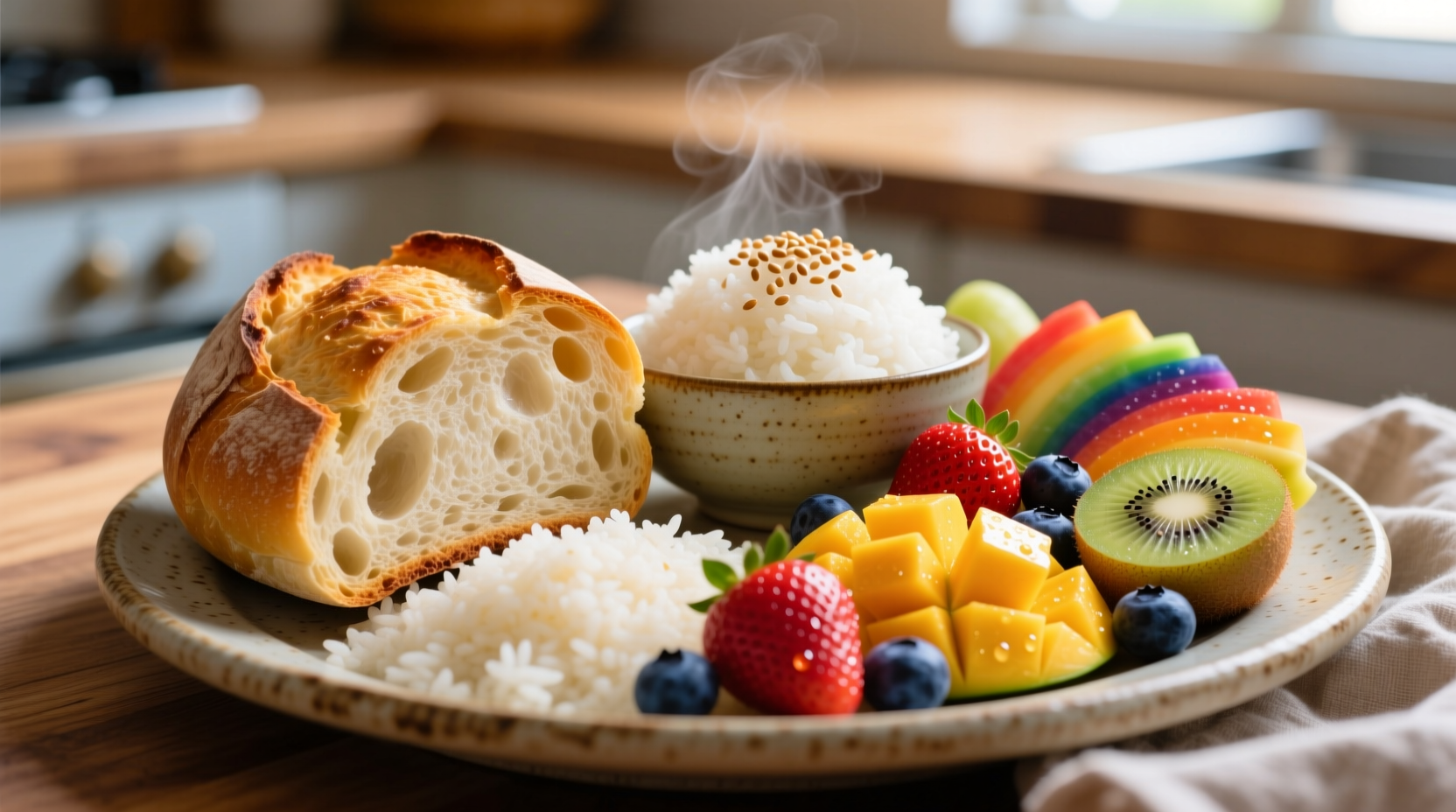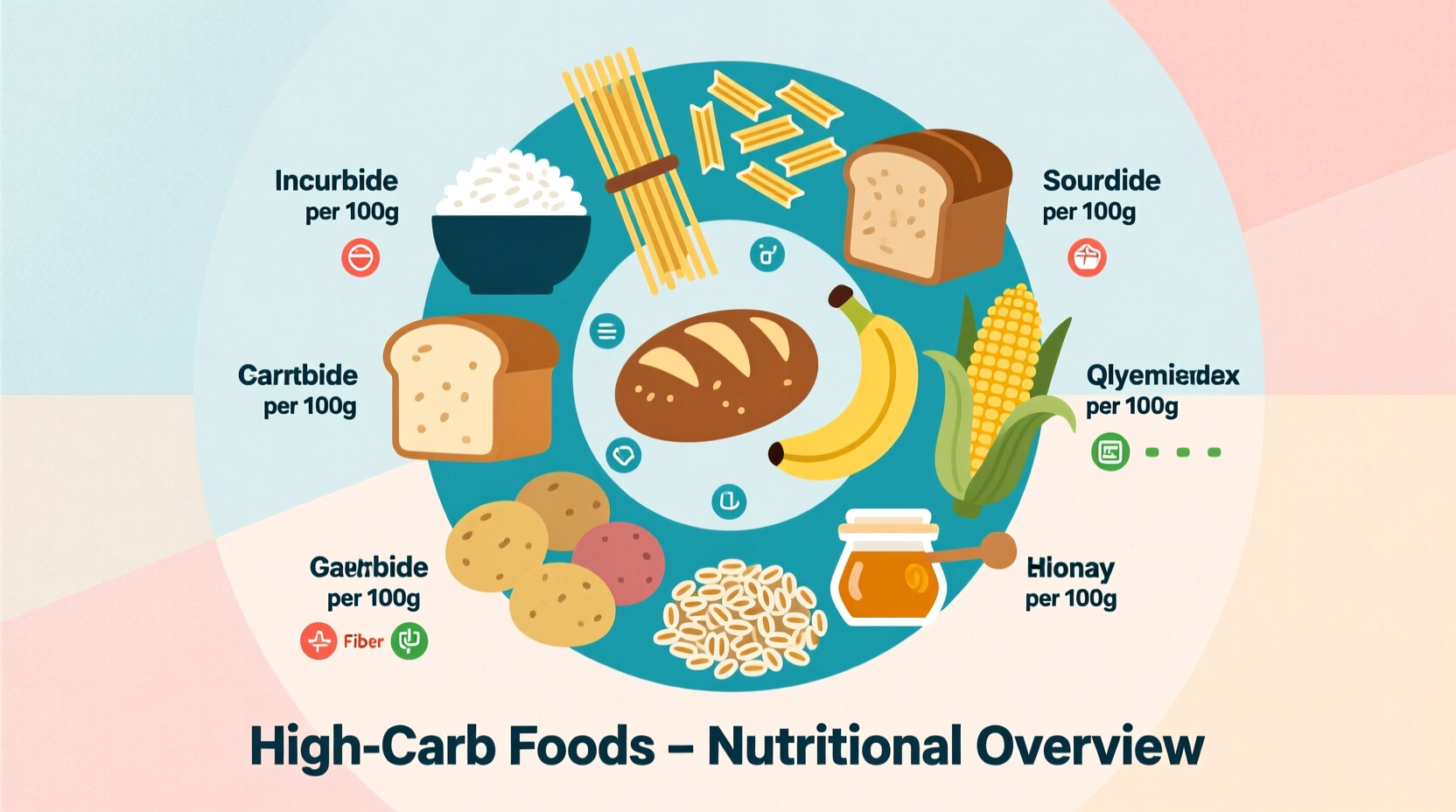Carbohydrates are your body's primary energy source, but knowing which foods pack the most carbs is essential for balanced nutrition. Whether you're counting macros, managing blood sugar, or simply curious about your diet, this guide delivers clear, science-backed information about high-carb foods with practical insights you can use immediately.
What Exactly Makes a Food "High Carb"?
Nutrition experts generally consider foods containing 15 grams or more of carbohydrates per standard serving as "high carb." This threshold comes from the CDC's nutrition guidelines, which use 15g as one carbohydrate choice for meal planning—particularly important for people with diabetes.
Carbohydrates exist in three main forms:
- Simple carbs: Sugars found naturally in fruits (fructose) and dairy (lactose), or added to processed foods
- Complex carbs: Starches in grains, legumes, and vegetables
- Fiber: Indigestible plant material that supports gut health
Top High-Carb Food Categories with Real-World Examples
Understanding which foods contain significant carbohydrates helps make informed dietary choices. Here's what you need to know about common high-carb categories:
1. Grain-Based Carbohydrates
Refined grains lose fiber during processing, causing faster blood sugar spikes than whole grains. The USDA MyPlate guidelines recommend making at least half your grains whole.
| Food (1 serving) | Total Carbs (g) | Fiber (g) | Sugar (g) |
|---|---|---|---|
| White bread (2 slices) | 26 | 2 | 2 |
| Whole wheat bread (2 slices) | 24 | 4 | 4 |
| Cooked white rice (1 cup) | 45 | 0.6 | 0.1 |
| Cooked brown rice (1 cup) | 45 | 3.5 | 0.7 |
| Cooked spaghetti (1 cup) | 43 | 2.5 | 1.3 |
2. Starchy Vegetables
While packed with nutrients, certain vegetables contain significant carbohydrates. The Mayo Clinic notes that non-starchy vegetables generally contain less than 5g carbs per cup, while starchy varieties can exceed 15g per serving.
Top high-carb vegetables include:
- Potatoes (1 medium baked potato: 37g carbs)
- Corn (1 cup: 27g carbs)
- Peas (1 cup: 25g carbs)
- Winter squash (1 cup cooked butternut: 22g carbs)
- Plantains (1 medium: 47g carbs)
3. Fruits and Fruit Products
Fruits contain natural sugars but also provide essential vitamins and fiber. The FDA's nutrition labeling guidelines help consumers identify sugar content in fruit products.
High-carb fruits per typical serving:
- Bananas (1 medium: 27g carbs)
- Mangoes (1 cup: 25g carbs)
- Grapes (1 cup: 27g carbs)
- Pineapple (1 cup: 22g carbs)
- Dried fruits (¼ cup raisins: 31g carbs)
4. Legumes and Beans
Though high in carbs, legumes offer substantial protein and fiber. According to Harvard T.H. Chan School of Public Health, beans and lentils have a lower glycemic index than many other carb sources due to their fiber content.
Carbohydrate content in common legumes (½ cup cooked):
- Chickpeas: 22g carbs
- Black beans: 20g carbs
- Lentils: 20g carbs
- Split peas: 20g carbs
When High-Carb Foods Support Your Health Goals
Not all high-carb foods require avoidance. The American College of Sports Medicine recommends carbohydrate loading before endurance events, as carbs provide essential energy for athletic performance.
High-carb foods become problematic primarily when:
- They displace nutrient-dense foods in your diet
- They contain added sugars without nutritional value
- They cause blood sugar spikes for people with insulin resistance
Reading Nutrition Labels for Carb Awareness
When evaluating packaged foods, focus on these label elements:
- Total carbohydrates: Includes all carb types
- Dietary fiber: Subtract from total carbs for "net carbs"
- Total sugars: Includes natural and added sugars
- Added sugars: Listed separately since 2020 FDA labeling updates
For example, a food with 30g total carbs, 5g fiber, and 10g added sugar delivers 25g net carbs with significant added sugar content.

Practical Tips for Managing Carb Intake
Use these evidence-based strategies for balanced carb consumption:
- Pair carbs with protein and fat: This combination slows digestion and prevents blood sugar spikes
- Choose whole food sources: Whole grains, fruits, and vegetables provide fiber that processed carbs lack
- Measure portions: Use measuring cups initially to understand standard serving sizes
- Read labels consistently: Many "healthy" foods contain hidden carbohydrates
Remember that individual carb needs vary based on activity level, health status, and personal goals. The Dietary Guidelines for Americans recommend carbohydrates comprise 45-65% of total daily calories for most adults.
Common Misconceptions About High-Carb Foods
Many people believe all high-carb foods are unhealthy, but this oversimplification ignores important context. Research published in Circulation shows that whole grain consumption is associated with lower cardiovascular disease risk.
Key distinctions to understand:
- Whole grains vs. refined grains
- Natural sugars vs. added sugars
- Carb density vs. nutrient density
When to Consult a Nutrition Professional
If you have diabetes, prediabetes, or other metabolic conditions, work with a registered dietitian to determine your optimal carb intake. The Academy of Nutrition and Dietetics offers a directory of qualified professionals who can provide personalized guidance based on your health status and goals.











 浙公网安备
33010002000092号
浙公网安备
33010002000092号 浙B2-20120091-4
浙B2-20120091-4